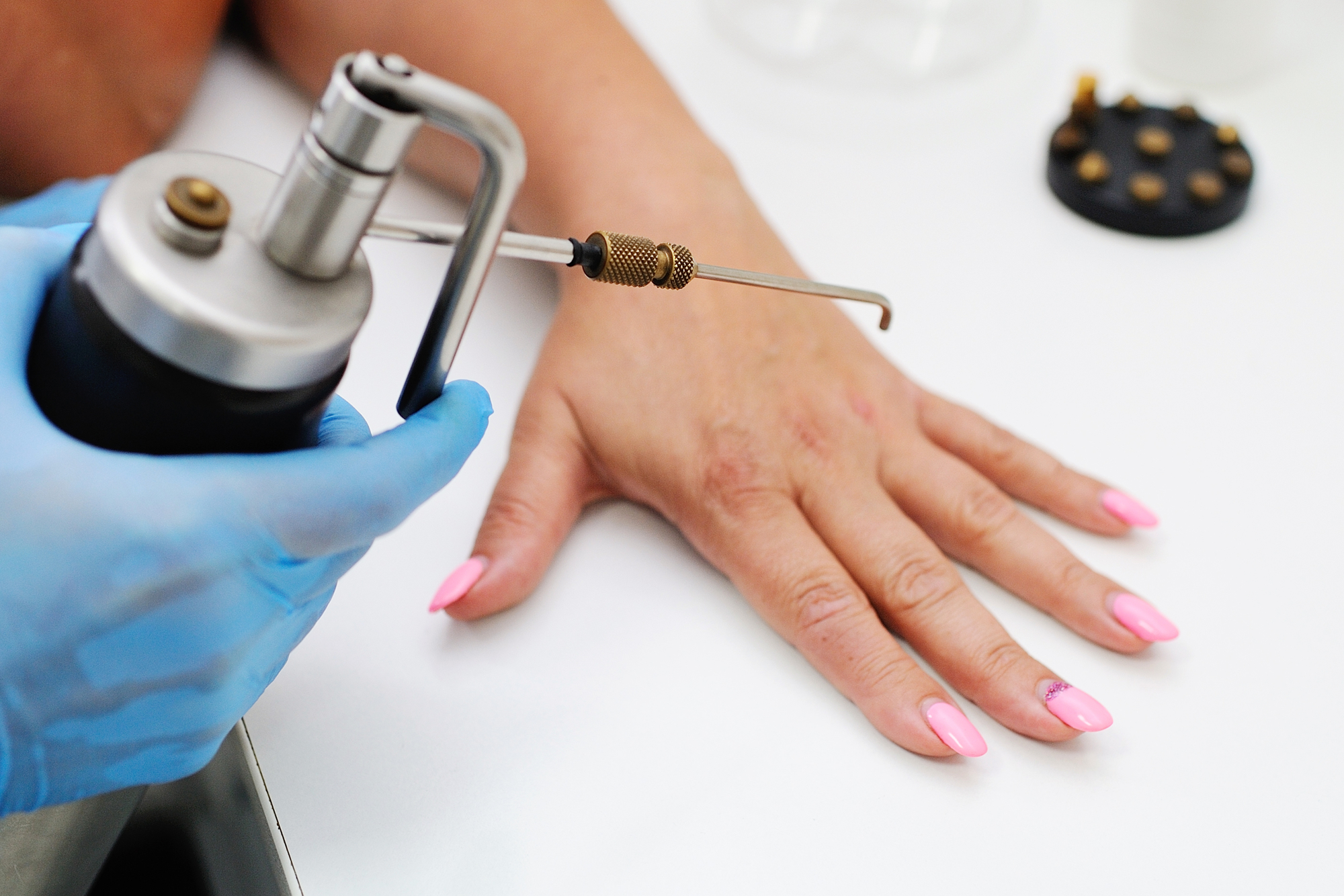What is a Wart?
Warts are non-cancerous skin growths that appear when a virus infects the top layer of skin. Although they aren’t dangerous, they are contagious.
What Causes Warts?
A common thick, benign growth with a rough surface, warts are caused by the Human Papilloma Virus (HPV). It’s spread by direct or indirect contact, or by touching other people or surfaces.
Many adults’ immune systems recognize this virus when they are exposed to it and therefore, may not develop a wart. However, for warts that do develop, they may become tender and even disfiguring over time.
As with any noticeable change in your skin, it’s best to consult your dermatologist immediately, so they can decide the best treatment option for you.
What Are the Treatment Options for Warts?
While all warts are contagious, there are some key distinctions between the five varieties, their symptoms, and their recommended treatment options.
Plantar Warts
These thick warts on the bottom of your foot often feel as though you’ve stepped on a rock or there’s a sharp splinter in your shoe.
Plantar warts require an aggressive treatment that involves removing the layers of dead skin, followed by freezing and cantharidin — a powerful medication, which your doctor will carefully apply to the impacted area causing a blister. Once the blister sloughs off, the wart comes off too. It may take a few treatments, but eventually, these warts disappear completely.
Common Warts
Appearing as bumps on your hands, knees, or elbows, common warts pop up suddenly in areas of plain sight.
Some common warts can be shaved off and removed completely, with others needing more aggressive treatments. Much like plantar warts, all of the dead skin needs to be removed around the wart before it can be frozen off.
Using liquid nitrogen, your dermatologist will either spray it on or apply it with a Q-tip to the targeted area. At 320 degrees below zero, cryotherapy freezes the skin quickly and severely damages the wart area so it can be removed.
A sub-section of common warts are periungal warts. These common warts appear around the fingernail. Because skin in this area grows slowly, it takes a long time for them to slough off. So we use the same aggressive treatment of removing dead skin cells, freezing the wart, and then applying blister medication to the wart area.
Flat
Flat warts are circular, scaly patches that often appear on the legs, particularly in women. Since they’re flat, unlike most other warts, you can still maintain regular skin care routines like shaving. However, by doing so, you can unknowingly spread these warts to your entire legs without knowing it.
By the time someone comes in for treatment, they may have hundreds of flat warts on their feet and legs, which can be difficult to remove.
Flat warts are best treated with medication that irritates the skin and causes cell turnover. It’s a long process and requires medication you can apply to a large area. Also, to avoid spreading any more warts, patients aren’t allowed to shave during the treatment process.
FAQs About Warts
Can warts be prevented?
While there is no way to completely prevent warts, it’s best to avoid direct contact with people who have known warts.
Should I treat my warts at home?
It may be tempting to treat your warts at home, but over the counter medication is often very painful and most people find it hard to stick with that treatment option.
A longer process than seeking treatment from your dermatologist, at home treatments are hard to manage as people often don’t know how to measure their progress or pain from medication. If you believe you have warts, it’s best to seek out the advice of your dermatologist before you take the at home treatment route.
How do I know if my warts are serious?
If you have a wart that’s non-healing or starts to bleed, that’s a sign that there could be a more serious problem. To avoid further trauma, visit your dermatologist to have it professionally examined.
Additional Resources
Click here to find an Epiphany provider near you.

